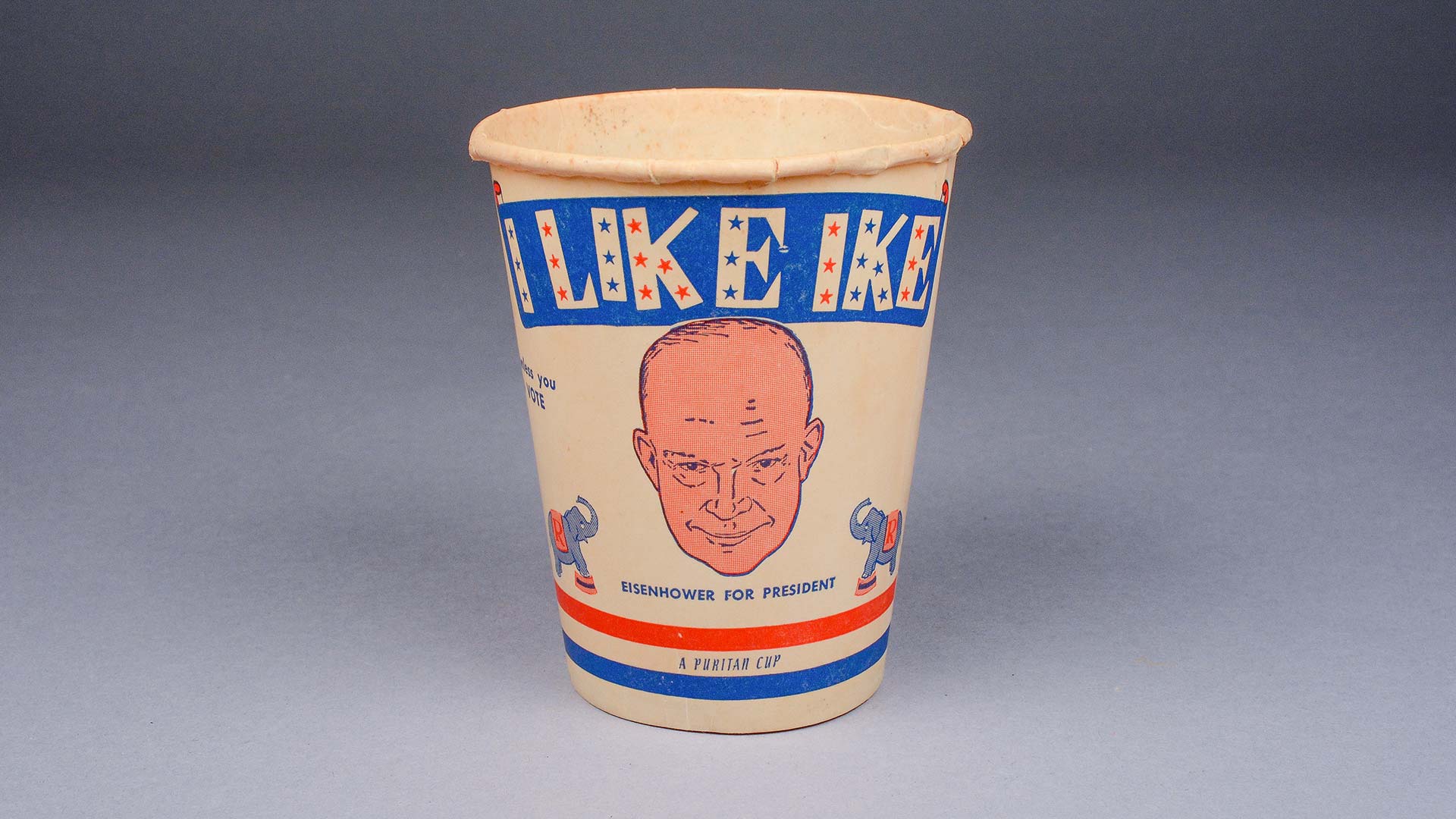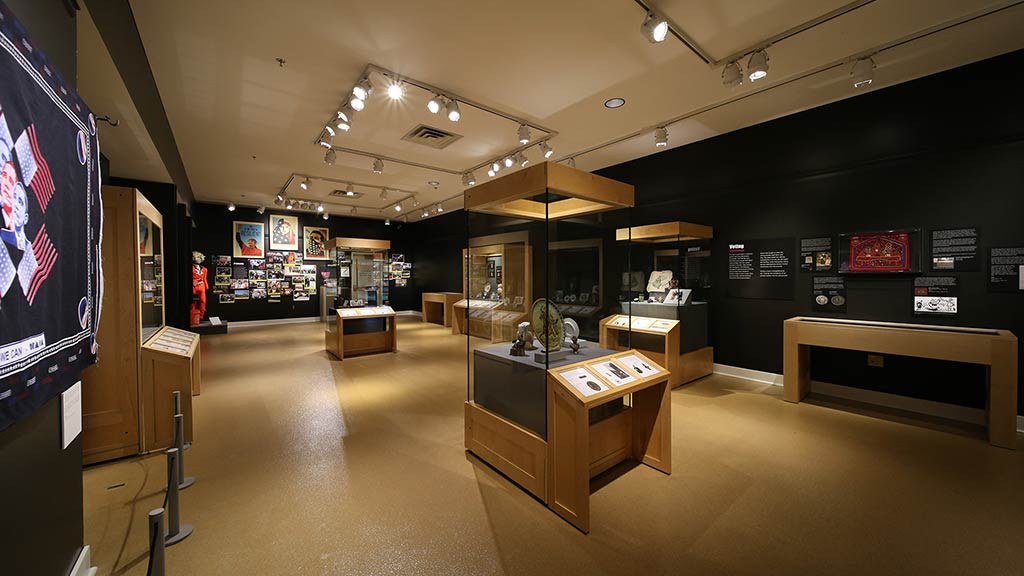
Tiny Objects, Big Ideas
- Post Date: 12/10/2020
- Author: Beth Watkins, education and publications coordinator
- Reading Time: 12 minute read
Helping to create the exhibit, Debates, Decisions, Demands: Objects of Campaigns and Activism, has been fascinating for me. Every time I work on a new exhibit, it becomes my new favorite, but this one feels different in important ways. The Spurlock Museum exhibits often focus on “worlds other than our own.” This is how a University official described the Museum to me at our re-opening, in 2002. But Debates, Decisions, Demands invites viewers in the United States to think about who we are. Who are we here and now? What are the national political realities we must deal with in 2020 and into the near future?
As the executive branch of our federal government has pushed some of the limits of its power and more voices have risen in protest, many Americans have been thinking about the acts and processes of political participation with an immediacy we never have before. It’s an extraordinary time to encourage conversations using American political artifacts. Our curator, Professor Nathan Tye, University of Nebraska Kearny, spoke at the exhibit opening about how many of these objects seem kitsch but are actually “the stuff of politics.” In other words, they are physically small and conceptually concise representations of big ideas, and they speak to issues in the past that echo through to the present. Building on that, I think they prompt us to think about what our current values are and how we want to shape those values for the future. With our ballots, our bumper stickers, our feet, and our voices, we enact who we want to be.
The exhibit primarily uses objects from the Museum’s People’s Collection (given by anonymous donors) of US presidential campaigns and women’s suffrage movements in the US and UK; however, because we are a museum of world cultures, we decided to include pieces from other places and times that also speak to American politics. Below are some of the exhibit objects that ignited my own curiosity.
Log Cabins
-
 2017.06.0060A: Images of a candidate as a rustic “everyman” have been a part of US political culture for a long time. This cup, a campaign object, circa 1840, is from the William Henry Harrison campaign for president. (Credit: Log Cabin Cup, by William Adams & Sons, UK, Straffordshire, circa 1840, ceramic with pigment, 5.83cm x 5.99cm. Urbana, The People’s Collection, Spurlock Museum)
2017.06.0060A: Images of a candidate as a rustic “everyman” have been a part of US political culture for a long time. This cup, a campaign object, circa 1840, is from the William Henry Harrison campaign for president. (Credit: Log Cabin Cup, by William Adams & Sons, UK, Straffordshire, circa 1840, ceramic with pigment, 5.83cm x 5.99cm. Urbana, The People’s Collection, Spurlock Museum)
Debates, Decisions, Demands includes several examples of log cabin imagery from the 1840 presidential campaign of William Henry Harrison. This is the first American presidential campaign with many of the components we recognize today: portraits of the candidate, physical souvenirs and paraphernalia, rallies, and speeches by the candidate. The log cabin was initially used by his opponents as a critique of Harrison, saying he was so old that he would rather sit in a log cabin and drink cider than run the country—he was 68 when inaugurated, the oldest president inauguarated until Ronald Reagan, in 1981. However, Harrison’s Whig Party took this description on as positive symbolism, connecting the candidate with grassroots movements and celebratory rallies, where Harrison supporters did in fact drink cider and sometimes built log cabins that would then serve as local party headquarters. What fascinates me about this is the appeal to a sense in the popular imagination of the candidate as a rustic everyman, even though Harrison’s biography fully contradicts it. His father was governor of Virginia, signed the Declaration of Independence, and owned one of that state’s oldest plantations (where Harrison was born).
The log cabin appears in American politics in other ways today, too. Even though we have been a majority urban society for a century, the log cabin is still a feature in narratives about Abraham Lincoln, and a pro-LGBTQ+ rights Republican group uses it in their name, the “The Log Cabin Republicans.”
Peanuts
-
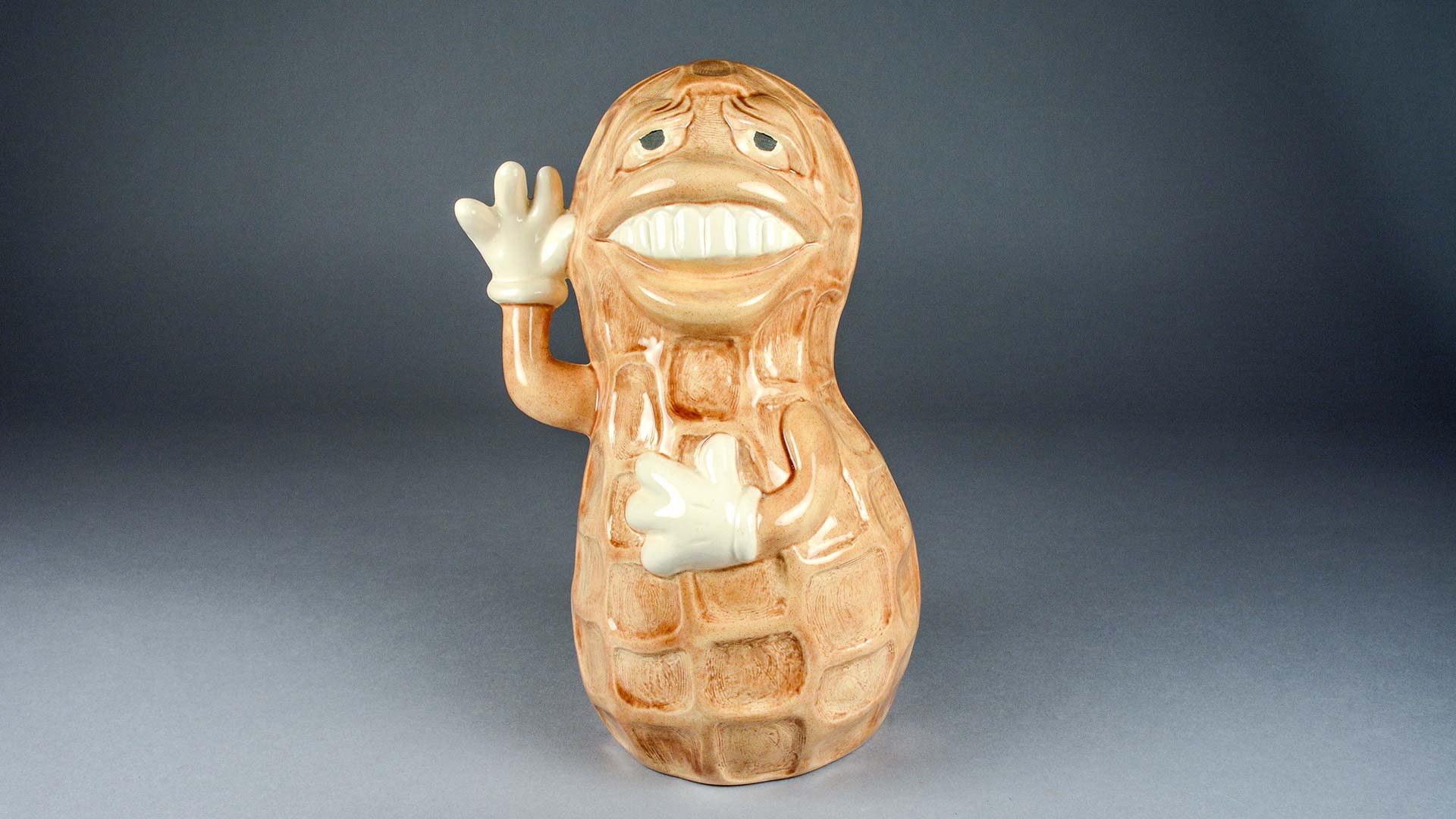 2017.06.0229: A small ceramic sculpture, circa 1976, is similar to one constructed in Jimmy Carter’s hometown of Plains, Georgia. That monument is 13 feet high and was paid for by Indiana Democrats for Carter’s presidential campaign. (Credit: Peanut, circa 1976, painted ceramic, 12.7cm x 25cm. Urbana, The People’s Collection, Spurlock Museum)
2017.06.0229: A small ceramic sculpture, circa 1976, is similar to one constructed in Jimmy Carter’s hometown of Plains, Georgia. That monument is 13 feet high and was paid for by Indiana Democrats for Carter’s presidential campaign. (Credit: Peanut, circa 1976, painted ceramic, 12.7cm x 25cm. Urbana, The People’s Collection, Spurlock Museum)
I had no idea that the strategy of spinning a candidate from the 1 percent as a man of the people had such historical roots. Think back to elections in your own lifetime, and you can easily come up with campaigns that use similar “down-home” rhetoric. Elsewhere in the exhibit, there’s a ceramic figurine of a smiling peanut that represents Jimmy Carter, whose campaign used his real identity as a peanut farmer and Washington, DC, outsider in the first presidential race after Watergate—when distrust of and disgust with politicians was high. This small ceramic sculpture resembles a monument that can still be seen today in Jimmy Carter’s hometown of Plains, Georgia. That monument is 13 feet high and was paid for by Indiana Democrats for Carter’s presidential campaign in 1976.
Faith Objects
-
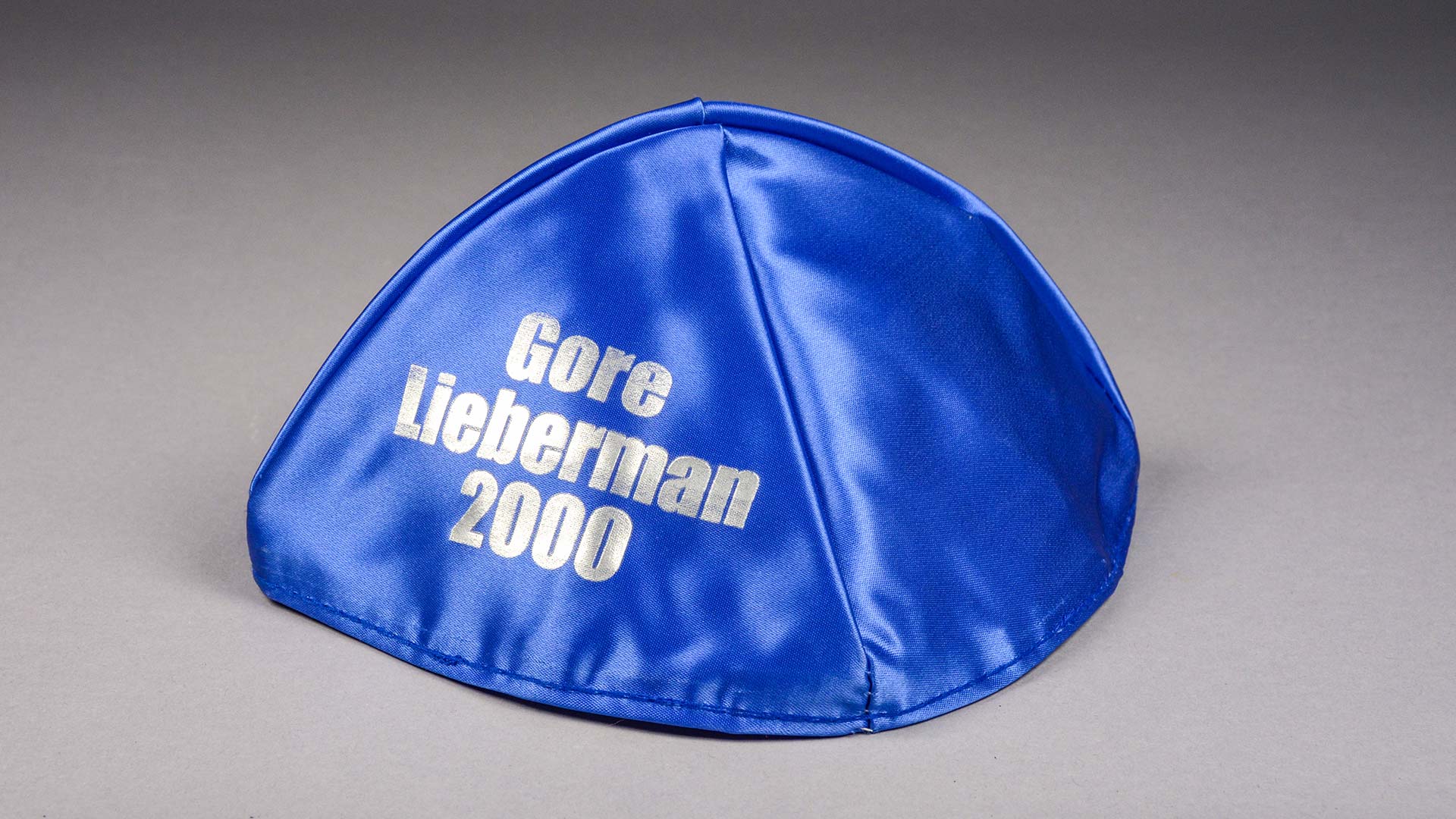 2017.06.0236: A yarmulke from the Gore-Lieberman campaign, in 2000. Joe Lieberman, who was running for vice president, is Jewish. Religious affiliation, rightly or wrongly, often becomes a part of campaign discourse. (Credit: Yarmulke from Gore-Lieberman Presidential campaign, 2000, satin with machine-spun threades, 22.5cm x 18.5cm. Urbana, The People’s Collection, Spurlock Museum)
2017.06.0236: A yarmulke from the Gore-Lieberman campaign, in 2000. Joe Lieberman, who was running for vice president, is Jewish. Religious affiliation, rightly or wrongly, often becomes a part of campaign discourse. (Credit: Yarmulke from Gore-Lieberman Presidential campaign, 2000, satin with machine-spun threades, 22.5cm x 18.5cm. Urbana, The People’s Collection, Spurlock Museum)
Despite the official separation of church and state in the United States, religion can play a huge role in American elections. It is often a coded way of talking about issues like ethnic identity, cultural influence, and personal behavior. Religious affiliation speaks to entrenched systems of financial, educational, and cultural privilege. Twenty of our 45 presidents come from just 2 historically British mainline Protestant denominations, Episcopalian and Presbyterian. These denominations now represent less than 2% of the population. (Read more on the religion of presidents and the general population at the Pew Research Center (external link).) The outliers to these general trends are just as interesting: half of the presidents on Mount Rushmore (Jefferson and Lincoln, who also appear on commonly used currency) had no official religious affiliation.
It is becoming more common for a major party candidate in federal elections to have affiliations other than Protestant. This yarmulke from the Gore and Lieberman campaign, in 2000, directly gestures to Joe Liberman’s Jewish faith. In our own times, Joe Biden will be only the second Catholic president (John F. Kennedy was the first), even though Catholics make up 20% of the US population. The first candidate who identified as Mormon, a religion born in the US almost 200 years ago, was Mitt Romney in 2012.
Slogans
I’ve been hearing about the “I Like Ike” campaign slogan my whole life, even though I was born after Eisenhower died—that’s how famous this slogan is. But I had never thought much about it until researching this exhibit, when I realized I had no idea what it actually means. I watched a version of the song on YouTube (external link), which only reinforced my suspicion that it says nothing about platforms or issues, and a lot about conformity and feeling good. “Let’s get in step with the guy who’s hep,” the lyrics say. It was news to me that anyone ever called Eisenhower “hep”! You can watch it, but I’ll warn you that the very catchy song might get stuck in your head.
-
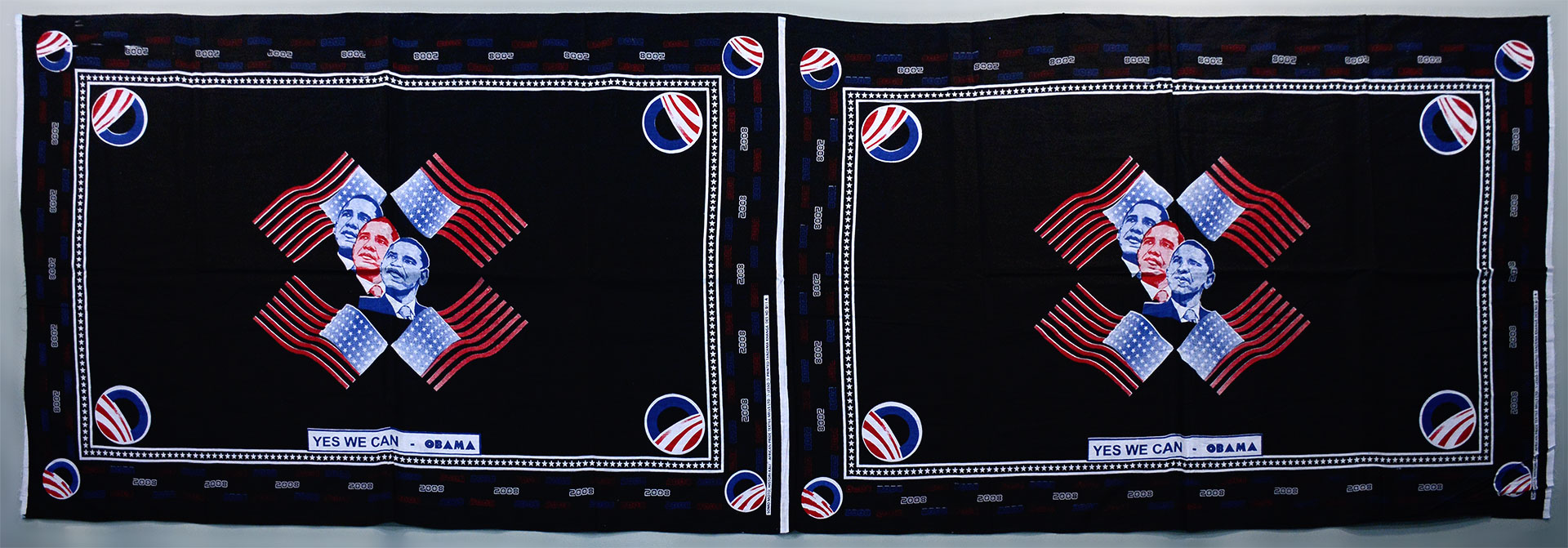 A paper cup (2017.06.0220) from Dwight D. Eisenhower’s campaign and an African Khanga cloth (2014.03.0263) from Barack Obama’s presidential campaign. Slogans say not only a lot about the candidate but about the culture of the time as well. (Credits: Papercup, c 1956, 7.81cm x 9.45cm, American Paper Goods Company, Urbana, The People’s Collection, Spurlock Museum; Khanga, 2008, 33.4cm x 111.2cm, Tanzania. Urbana, Lynn and Michael Noel Collection, Spurlock Museum)
A paper cup (2017.06.0220) from Dwight D. Eisenhower’s campaign and an African Khanga cloth (2014.03.0263) from Barack Obama’s presidential campaign. Slogans say not only a lot about the candidate but about the culture of the time as well. (Credits: Papercup, c 1956, 7.81cm x 9.45cm, American Paper Goods Company, Urbana, The People’s Collection, Spurlock Museum; Khanga, 2008, 33.4cm x 111.2cm, Tanzania. Urbana, Lynn and Michael Noel Collection, Spurlock Museum)
Contrast “I Like Ike” with a piece from Tanzania that bears the equally famous 3-word slogan for Barack Obama. The slogan “Yes We Can” doesn’t name specific issues issues either, but it incorporates very different thoughts. “We” expresses a group’s point of view, and “can” makes an appeal to take action, instead of just representing a mild emotion. Obama’s hopeful slogan and his personal and family histories made him resonate beyond the US as a political celebrity.
Coins
-
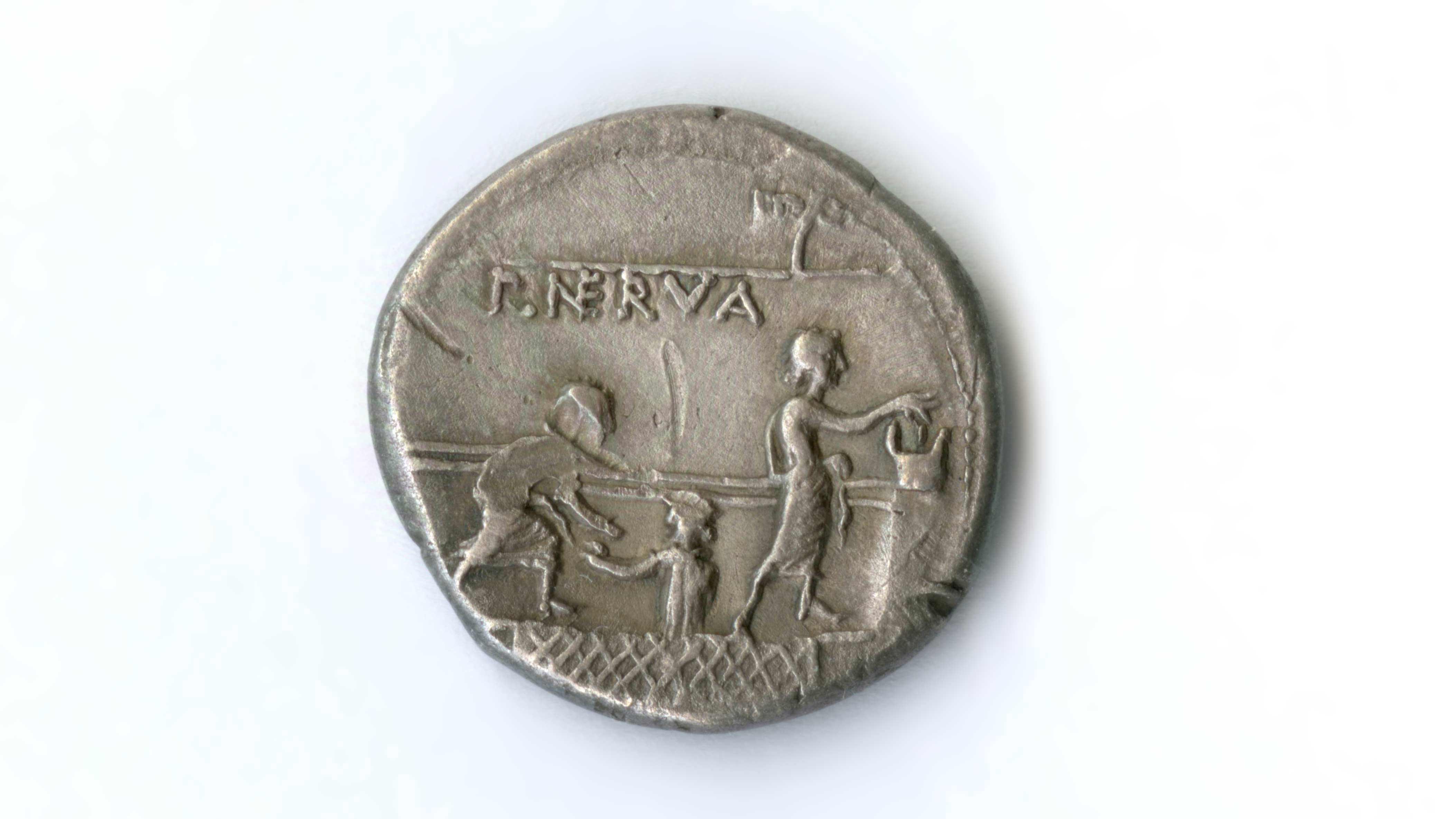 1919.63.0852: A Roman coin depicting two men voting. (Credit: Coin: Denarius of Rome, by Licihius Nerva, Moneyer, c 112 BCE, 1.77cm x .21 cm, silver. Urbana, Spurlock Museum)
1919.63.0852: A Roman coin depicting two men voting. (Credit: Coin: Denarius of Rome, by Licihius Nerva, Moneyer, c 112 BCE, 1.77cm x .21 cm, silver. Urbana, Spurlock Museum)
Some of the oldest depictions of political procedures in the Museum are found on tiny coins that date from the Roman Republic. The coin depicted here actually shows the process of voting: a voter is being handed a tablet, where he will write the initials of his preferred candidate, and the other is dropping his marked tablet into a container to be counted.
Pins
-
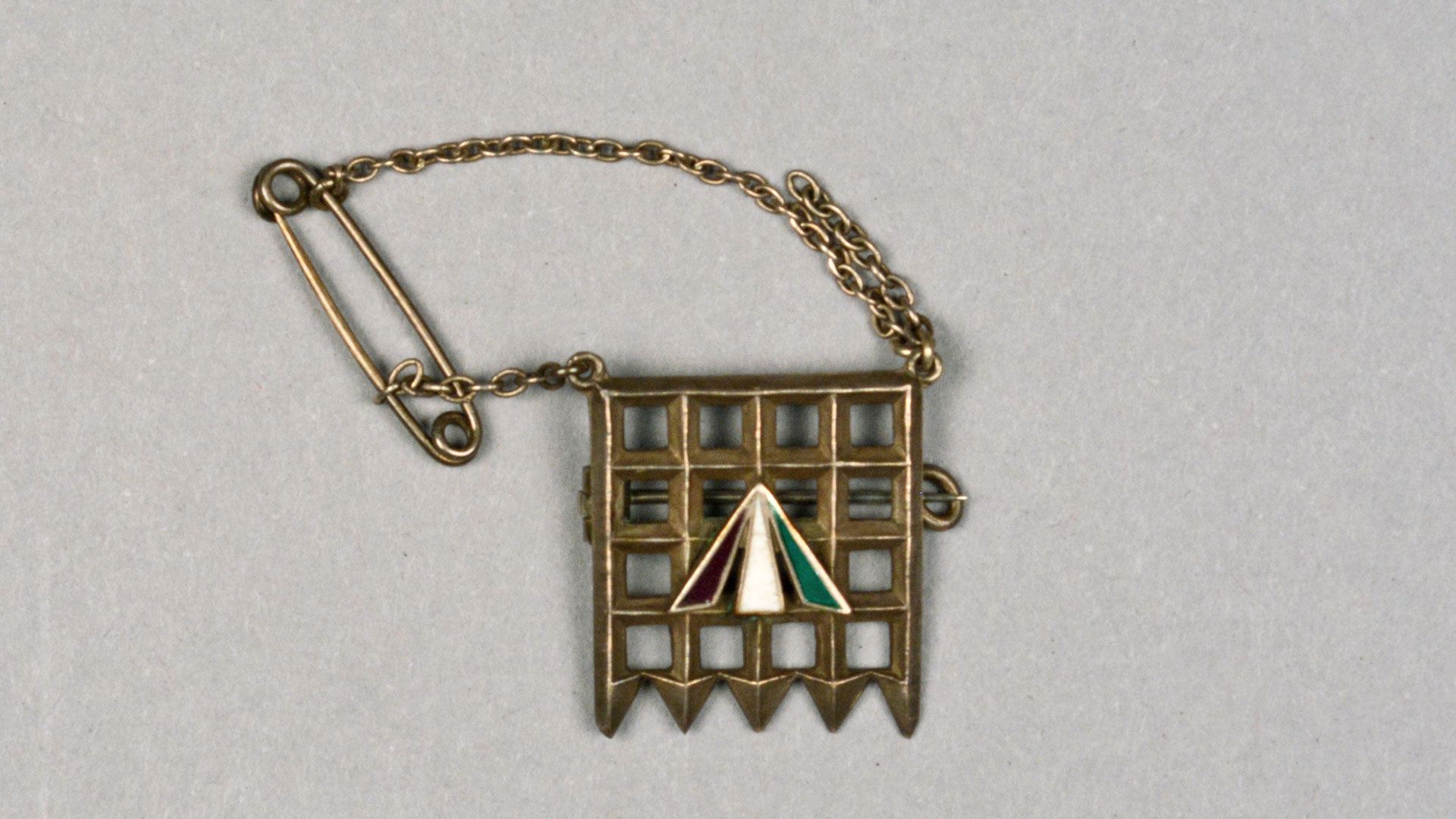 2017.06.0238: Holloway brooches, like this one, were presented by the Women’s Social and Political Union to women who had been imprisoned for suffrage activity at Holloway Prison, London. (Credits: Pin: Holloway Brooch, designed by Sylvia Pankhurst, c 1909. Manufactured by Toye & Company, London. 2.6cm x 5.3cm, silver and painted enamel. Urbana, People’s Collection, Spurlock Museum)
2017.06.0238: Holloway brooches, like this one, were presented by the Women’s Social and Political Union to women who had been imprisoned for suffrage activity at Holloway Prison, London. (Credits: Pin: Holloway Brooch, designed by Sylvia Pankhurst, c 1909. Manufactured by Toye & Company, London. 2.6cm x 5.3cm, silver and painted enamel. Urbana, People’s Collection, Spurlock Museum)
I have been using the gendered pronoun “he” deliberately in most of this article because, unfortunately, the objects in our collections do mostly represent the political experiences of men, who for so much of world history have been the only people who could hold formal political power as officials, candidates, and voters. The British woman who wore this little square brooch a century ago had been imprisoned for her actions as a fighter for the right to vote. The pin is a badge of honor and sacrifice. It is a mark of just how difficult it was to create space for even a small proportion of women to participate officially in the political system. Three traveling exhibits from other organizations that discuss citizenship and suffrage for women and people of color are also on display alongside Debates, Decisions, Demands, on the main floor of the Museum.
In conclusion
On a personal note, the topics in this exhibit are a professional first for me. Because my 20-plus years in the museum field are in world history, anthropology, natural history, and local history in Toronto and Illinois, I’ve never before worked on an exhibit or public programming that dealt with big-picture American history and national issues. I loved the challenge of combining the light-hearted aesthetics of the pieces with the significance of the ideas they represented. I tried to construct object labels that provided historical context but also connected to readers’ experiences, so as to prompt further curiosity in viewers about what these ideas mean in America now.
-
- Share: 𝕏
- Subscribe to Newletter
- Giving
